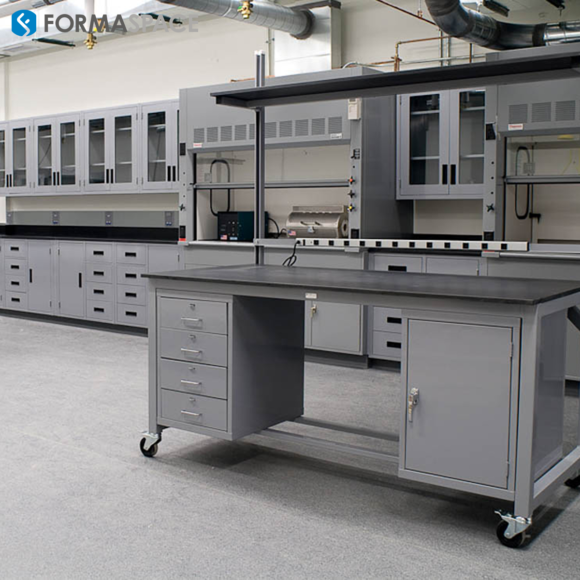Natural Gas Distribution is back in the Headlines
The threat of a Russian invasion of Ukraine has brought natural gas supplies in Europe to the front pages of the news.
Conflict could lead to Russia cutting off supplies of natural gas to Europe as well the retaliatory closure of the planned Nordstream 2 pipeline from Russia to Germany.
Meanwhile, the US government has offered alternative supplies of natural gas to keep Europe warm in the winter.
Why Methane Gas is a Growing Problem in our Efforts to Mitigate Climate Change
Talk about war and its dramatic consequences, should they come to pass, has overshadowed growing concerns over the outsized role that methane gas leaks play in driving up greenhouse gas emissions in the atmosphere.
The Intergovernmental Panel on Climate Change (IPCC) tracks the effect of methane gas emissions by calculating their impact on the environment in comparison to CO2 emissions. The results are discouraging: methane can trap heat in the upper atmosphere much more efficiently than CO2 (as much as 87 times according to some IPCC studies). It’s also slow to break down, taking 12 years or more to turn into CO2.
(Of course, turning into CO2 doesn’t remove the problem, it’s also a major greenhouse gas, but it’s an order of magnitude less harmful than methane.)
Natural Sources of Methane Gas
Some of the methane gas escaping into the atmosphere is due to natural causes, such as cattle, decaying vegetation, and fires.
Warmer temperatures in recent decades have exacerbated the last two items, and environmental scientists fear the worst is yet to come.
In Siberia, geologists are documenting how the once frozen permafrost landscape is melting due to warmer temperatures – potentially releasing devastating amounts of methane gas from decayed vegetation that has been trapped in frozen ground for thousands of years.
Man-Made Methane Gas Emissions May Be Worse than We Thought
Recent research published by the University of Rochester indicates that air samples captured in ice pockets in Greenland show that the pre-industrial era atmosphere contained far less methane than previously thought.

If true, this means we have underestimated – by as much as 25% to 40% — how much of the methane in today’s atmosphere originated from man-made sources
Get Ready for New Emission Certificates for Natural Gas Production and Distribution
In late 2020, many in the energy industry were surprised that the France government stepped in to delay a $7 billion, 20-year contract between the French trading firm Engie and US-based NextDecade to import 11 million tons of LNG from the US. The French government reportedly claimed that the American producers emit too much methane.
Indeed, financial decisions based on corporate carbon footprints are going to become more common in the future as big companies begin to fall under Scope 3 emission disclosures.
These disclosures will hit companies producing, distributing, and trading fossil fuels especially hard, according to financial analysts at Bloomberg.
Natural gas producers (such as Cheniere Energy) will be motivated to disclose (and reduce) their emissions, not least because they were to maintain the reputation of natural gas as a “clean energy” source as well as a “bridge” taking us to a future hydrogen-based economy, a renewable-powered one, or a combination of both.
(See our recent article on hydrogen infrastructure developments for more information.)

Surprising New Measures to Reduce Carbon Emissions
What can be done to solve the problem?
One approach is to double down on efforts to use direct air capture of CO2 emissions in the atmosphere.
One such new project caught our eye: a forest of artificial trees kitted out with special resin coatings specially designed to capture CO2. According to Klaus Lackner, the head of the research team at Arizona State University that is developing the project, the first artificial carbon dioxide capturing “trees” will be deployed in the spring of 2022.
As interesting and as promising as this project may be, it may ultimately suffer the same fate as many other carbon capture-project attempts in the past. According to analysts from the Wall Street Journal, existing carbon capture efforts have either failed to scale up to a size needed to make a difference at a global level or they have proven too expensive to operate, or both. Optimism remains high, however, and they report that new sources of funding to solve the problem keep opening up.
Reducing Leaks in the Transmission, Storage, and Use of Methane Gas is the Biggest Low Hanging Fruit
Given that the impact of methane gas on atmospheric warming is an order of magnitude higher than that of CO2 emissions, many environmentalists are pushing hard to focus efforts on reducing methane leaks – figuring that cutting these emissions gives the biggest bang for the buck.
One surprising consequence of this approach is that many communities (including New York City) are changing their residential building codes to shift away from natural gas for heating and cooking in favor of all-electric appliances, such as electric induction cooktops. In other words, no gas service = no gas emissions.
Proponents of this approach are spurred on by a recent study conducted by Stanford University that found that there are more than 40 million natural gas stoves in US homes across the country and that home stove methane emissions contribute as much impact on the atmosphere each year as the annual carbon dioxide emissions of 500,000 cars.
A Return to Greater Oversight and Regulation by the EPA
At the UN COP 26 climate conference, the US joined over 100 countries in pledging to sharply reduce methane emissions globally.
The Biden administration’s ambitious Build Back Better plan, which would help fund many necessary infrastructure investments to further the nation’s transition to a clean energy-based power grid, has stalled since then, perhaps irrevocably.
Despite this setback, the Biden administration had already seen bi-partisan success in rolling back the Trump-era reversal of Obama-era controls on methane leaks at oil and gas wells.
Incentives, Credits, Funding to Encourage Closing Leaking Wellheads, Pipelines, and More
The issue of so-called “orphan” wells has become a hot topic, given that so many oil and gas companies went bust during the onset of the Covid pandemic. In many cases, these have become the worst of the worst when it comes to methane gas leaks – dubbed “super emitters” by environmentalists.
In Texas, these abandoned wells have become the responsibility of the state if the owner is bankrupt and the wells are inactive for 12 months.
The question becomes, “who pays for it?”
US Interior Secretary Deb Haaland announced that the Federal government will send $1.15 billion to the states to help clean up thousands of abandoned “orphan” wells – the Department of Interior has documented 130,000 abandoned wells across the country, but the EPA estimates the number could be orders of magnitude higher, somewhere between 2 and 3 million.

Non-Profit Groups Seeking to Control Wellheads, Flare Stacks, and Pipeline Leaks
Finding these abandoned wells and capping them is an urgent task. So too are pinpointing other sources of methane gas emissions, such as incomplete burns at flare stacks or leaks from natural gas pipeline facilities.
Enter the “methane hunters” – private organizations and individuals dedicated to finding methane leaks and getting them fixed.
One such organization is the Environmental Defense Fund (EDF).
EDF’s lead scientist, David Lyon, has been investigating the vast Permian Basin region of west Texas, on the lookout for the sources of methane emissions leaking into the atmosphere. Their sensor readings calculated there must be methane emissions totaling 300,000 metric tons a year – but the question was ‘where was it coming from?’
Lyon hired a helicopter to fly over gas flare towers and measure their emissions high in the air using infrared sensors. Based on the amount of unburned methane discharged into the atmosphere, Lyon has extrapolated that improper flaring could account for all 300,000 metric tons of the unaccounted emissions.
To gain access to access to more terrestrial data, the EDF has teamed up with Google Earth and its fleet of vehicles mapping the world’s streets to find even small methane leaks in our cities and neighborhoods.
Satellite Imagery is an Ideal Tool to Identify Methane Gas Leaks around the World
It would be impractical to map the world’s methane emissions via helicopter, especially in regions such as Russia that might not welcome the additional scrutiny.
But fortunately, satellite sensors can step in to pinpoint methane gas leaks.
In June 2021, the European Space Agency’s Copernicus Sentinel-5P satellite was flying over Moscow when it identified a methane leak. Subsequent passes of the satellite (which orbits the planet 14 times a day) mapped out the scope of the plume, which stretched across Russia to India. The source was found to be a leaking Gazprom steel pipeline, which the instruments overhead calculated was spewing out nearly 400 metric tons of methane an hour.
Gazprom declined to provide details of the nature of the leak nor the location, but an intrepid Washington Post reporter used the satellite GPS data to find and visit the site.
Even more satellite sensors trained on methane emissions came online in 2021, including a new fleet of 10 high-resolution satellites launched on behalf of the Canadian company GHGSat. These are credited with finding eight simultaneous plumes of methane gas leaks emanating from a gas field in Turkmenistan on February 1st.
EDF will also take to the skies in 2022 with their planned MethaneSat, which they hope will be able to monitor more than 80% of the world’s oil and gas production sites.
Detection technology in space and on the ground may be one of our best hopes in controlling methane gas emissions, especially when combined with sophisticated data analysis.
For example, data science entrepreneurs Marco Albani and Dr. Alessandro Baccini introduced a new “above ground biomass” (AGB) mapping tool earlier this year named Chloris Geospatial. According to Albani and Baccini, the Chloris mapping tool uses AI to analyze a combination of live satellite imagery with field data collected on the ground to create dynamic maps that catalog how much of the world’s carbon content is stored in our forests, soils, and oceans.
Chloris Geospatial has also been able to analyze historical data as well, which is publically available in partnership with Microsoft’s Planetary Computer under a Creative Commons license. This tool provides direct free access to datasets from 2003 – 2019, allowing researchers (both professional and amateur) to visualize how our planet’s carbon stock and ecosystems have changed due to deforestation during that timeframe.
Formaspace is Your Partner for a Better Work Environment, No Matter What Field you are in.
If you can imagine it, we can build it – here in Austin, Texas, at our Formaspace factory headquarters.
If you are looking for ways to make the most of your existing building footprint, we can help with innovative, custom furniture solutions for your IT lab, research center, pharma facility, educational institution, office, and more.
Find out how we can work together.
Contact your Formaspace Design Consultant today.










